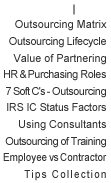Part 1 - Having a customer-focused mindset
(Part 2 will focus on the mindset of outcomes Vs. meeting objectives)
Today, many companies say they want a 360° view of their customers so they can better understand their customers and sell their services more effectively to them. However, do those customers really want to be put under a microscope and viewed from every direction? And, does a 360° view really tell you what the customer experience with your service or product feels like?
Definition
Being customer-centric is a start; however, there is more to really understanding what a customer wants. Customers judge a product or service by how it feels in relation to their expectations rather than according to their behavioral aspects or demographics. Clearly, demographics alone cannot tell you what a customer want or expects.
Instead, we recommend the use of a technique called “Think 180” – that is, to stand in the customer’s shoes or sit in their chair and look back at your operation or environment. How do you (as the customer) wish to receive the service or access the product? What experience do you want with this service or product? And, how do you want your problems resolved?
Key Steps
To think 180 you must first completely clear your mind of all company-driven preconceptions of your product, service and delivery. Next, follow these three basic steps to begin the process of determining what results you want and who will best deliver those results:
- Define the Outcome: What is the outcome, or experience you want your customer to have? Describe this in terms of what they receive and how they receive it, rather than how it is delivered. Be the customer, and make the statement, "What I want is . . . "
- Determine What It Will Take to Create that Experience: Define those events, attitudes and behaviors that will create the experience your customer wants. If you have different customer needs (e.g., federal agencies, wholesalers), look at each need separately. This will help reduce selection, implementation and customer satisfaction issues later in the process.
- Plan and Organize: Define the processes, procedures, structures and relationships that will result in those events, attitudes and behaviors. If you have different customer needs, you may need to establish separate processes for each type of customer.
At this point, you have a picture of what you want to create and what it will take to create those results. And, you may have a better understanding of what infrastructure you and your company will need to effectively implement and deliver this product or service.
Now you can begin your strategic planning process, based on a think 180 starting point. An effective think 180 mindset also helps put metrics in place for assessing performance in delivery.
Example
We each have experiences that can serve as think 180 examples. Below, we have provided an example of a company that is outsourcing its payroll processing to a 3rd party:
- Typical Approach – The IT and Payroll departments compile requirements so the vendor will understand how to process the company’s bi-weekly payroll for its North American employees. Their requirements list includes all checks are printed and sent two days before the bi-weekly payday. They have identified this requirement based on their previous experience with the company’s inhouse payroll system.
- An Employee’s View – As an employee, what experience do you want regarding receiving your paycheck? Most of us might say something like, "I want to know that my paycheck is deposited into my account every other Friday morning, and I want to receive an accurate printed pay stub in my company mail box on that same Friday morning."
- Think 180 Approach – Using a think 180 approach, the employee’s experience (when you get your money) is paramount. This approach works back from the collective event of all employees receiving their paychecks on Friday morning, and factors in a lead time that accommodates an acceptable accuracy rate of delivery by Friday. Delivery processes and vendors, such as interoffice mail delivery and the U.S. Postal Service, must be viewed as part of this analysis.
The IT and Payroll departments must decide what percentage of the user population is acceptable to be at risk of late delivery (e.g., 1% of 10,000 employees = 100). This conversely determines the percentage of on time arrivals (i.e., 99%) that must be set for the vendor.
Symptoms of Failure to Think 180
Here are two common examples of companies presenting their view of their customers – not how their customers view themselves:
- Look at a company’s website – Does it classify customers as "pre-sales" and "post-sales"?
- Call into a company’s support center – Are you asked if you are "pre-sales" or "post-sales"?
These companies view their services and products from an organizational perspective. However, customers typically see themselves as potential customers or customers – not pre- and post-sales. Both companies fail to view their companies from a customer’s perspective.
A failure to think 180 may also be reflected in low customer satisfaction ratings. When a company surveys its customers to determine their satisfaction with its products or services, the feedback can be interpreted simply as:
|
|
Experience
|
|
Satisfaction =
|
|
|
|
Expectations
|
Low customer satisfaction means that a customer’s expectations, set during the sales cycle, were not equal to their experience with the product or service.
Summary
Try to think 180 the next time you consider creating a new process, product or service. You may find yourself walking a mile in your customer's (or user's) shoes and creating a better result for all involved.
© 2001 Endeavour Business Learning , 2006 Think180™
Note: To download a PDF copy of this article, go to the Think180 PDF Library page.
|


